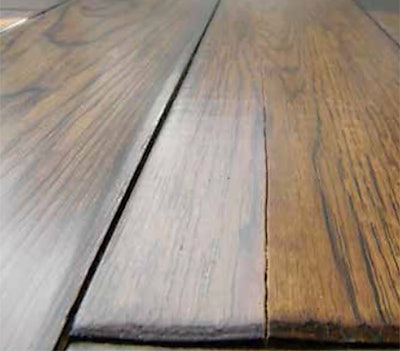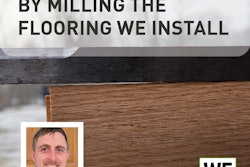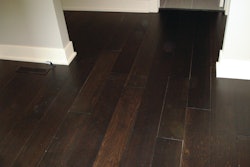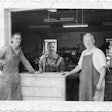
The Problem
I was called to inspect a splitting wood floor with dry-cupping in Albuquerque, N.M.
What Happened
Less than two years earlier, in late summer the 9/16-inch engineered hickory had been glued to concrete with thermal mass hydronic heating. The following winter, the floor dry-cupped, and three splitting boards were replaced. The floor flattened during the summer. The following January, the floor had four splitting boards, and the dry-cupping returned. The thinking by the retailer, installer and a third-party independent inspector was that the in-floor heat was the culprit and that the wood flooring itself was not suitable for that application.
The Inspection
In January, the distributor and the inspector separately noted very low RH—between 18–22%—as well as several splitting boards. The distributor took MC readings below 6% and found the floor's surface temperature ranged from 78–84⁰F. Samples of these boards were subsequently tested, revealing a MC of 3%.
By the time of my inspection at the end of March, the visual on the floor had greatly improved, and the MC was 6%, the floor temperature was 72⁰F, the air temperature was 68⁰F and the RH was 26%.
The MC at the time of installation had been recorded at 9%—consistent with a significant seasonal swing in RH and MC.
The house was cooled with a swamp cooler, a common practice in the region. This translates to an average RH up to 60% in the summer and down to 20% in the winter.
How to Fix the Floor
The following corrections were made (and the floor has now been problem-free for years):
- A whole-house humidifier was added for use during the drier times of year. This balanced out the seasonal humidity swings, keeping RH between 30%–50%.
- Damaged boards were replaced.
- Boiler temperatures were adjusted to ensure the floor surface temperature did not exceed the flooring manufacturer's standard of 80⁰F.
In the Future
Seasonal problems in wood flooring are not isolated to structures with in-floor heating systems. Use of in-floor temperature sensors, data loggers to monitor floor conditions and humidification systems will help provide optimum floor performance. A well-designed in-floor heating system should allow for even emission of heat without hot spots or surface temperatures exceeding manufacturers' standards (commonly 80⁰F).
RELATED: The Cause of 'Dry-Cupping' in Engineered Wood Floors

































